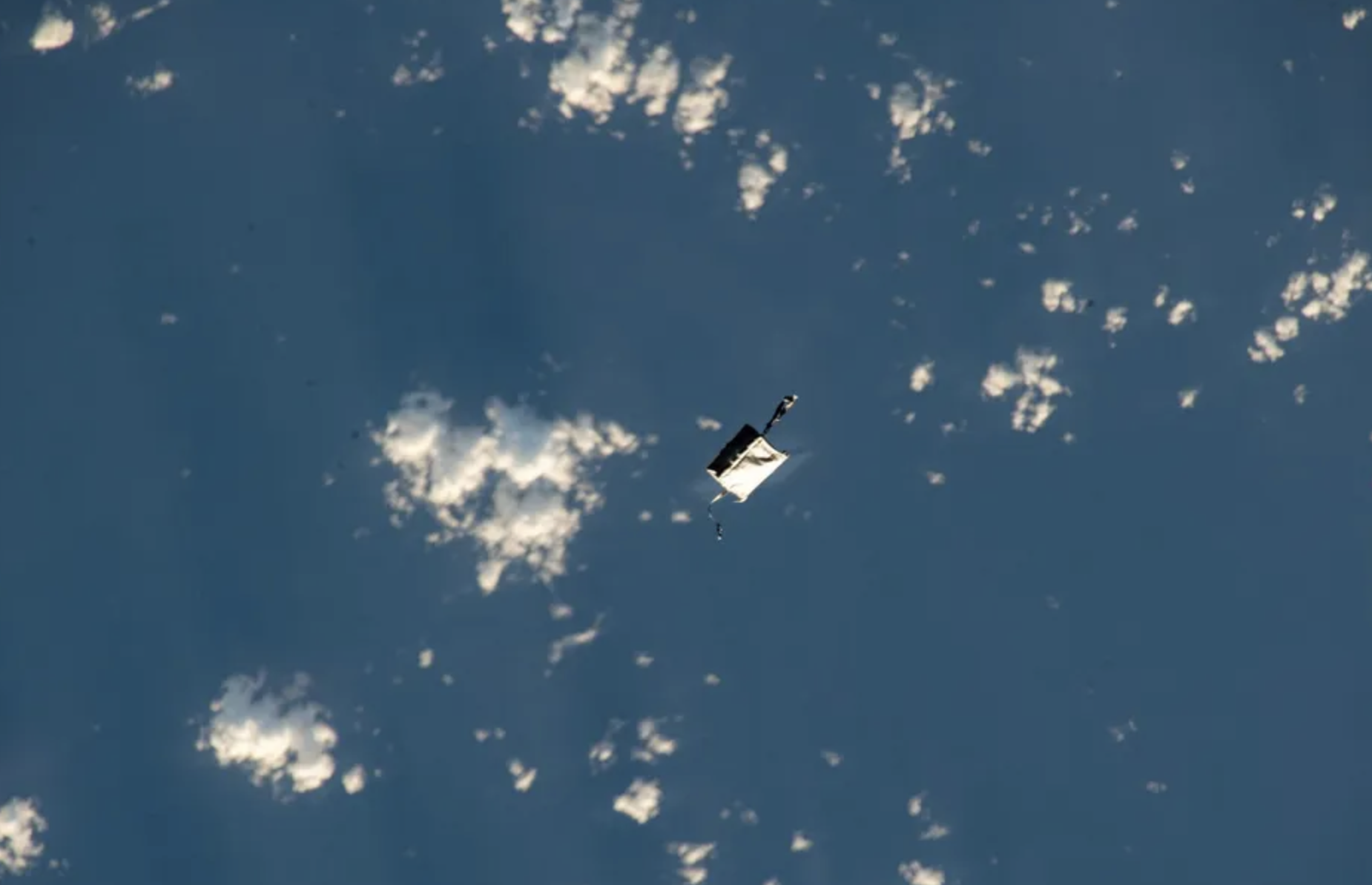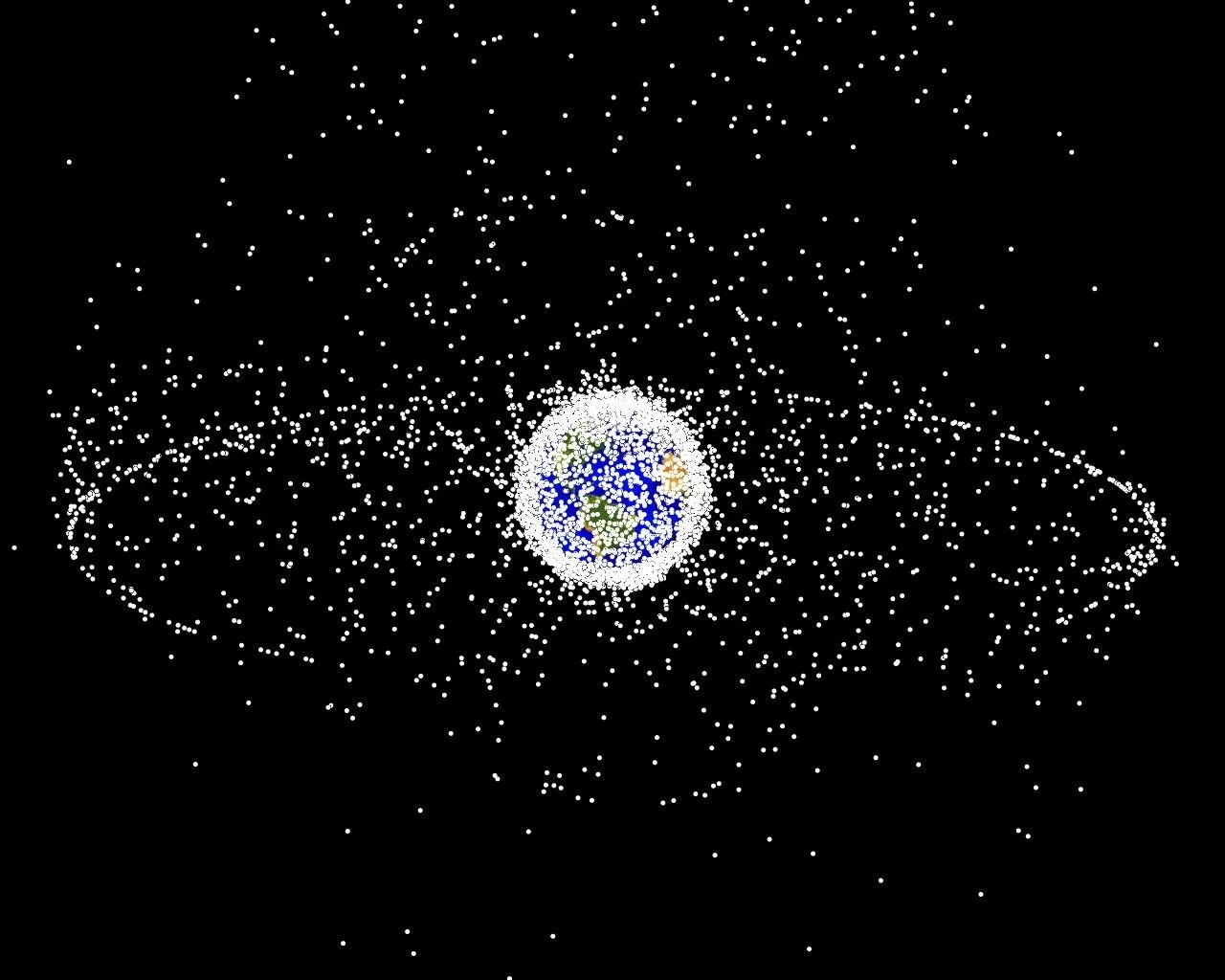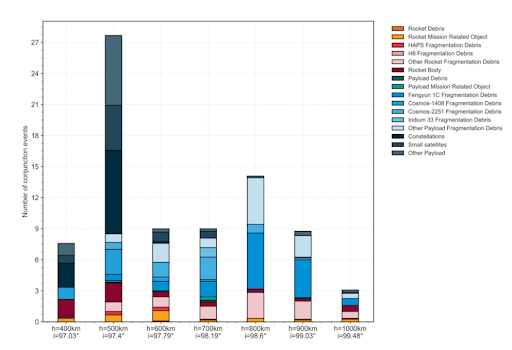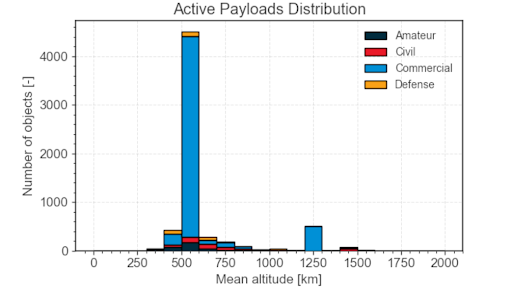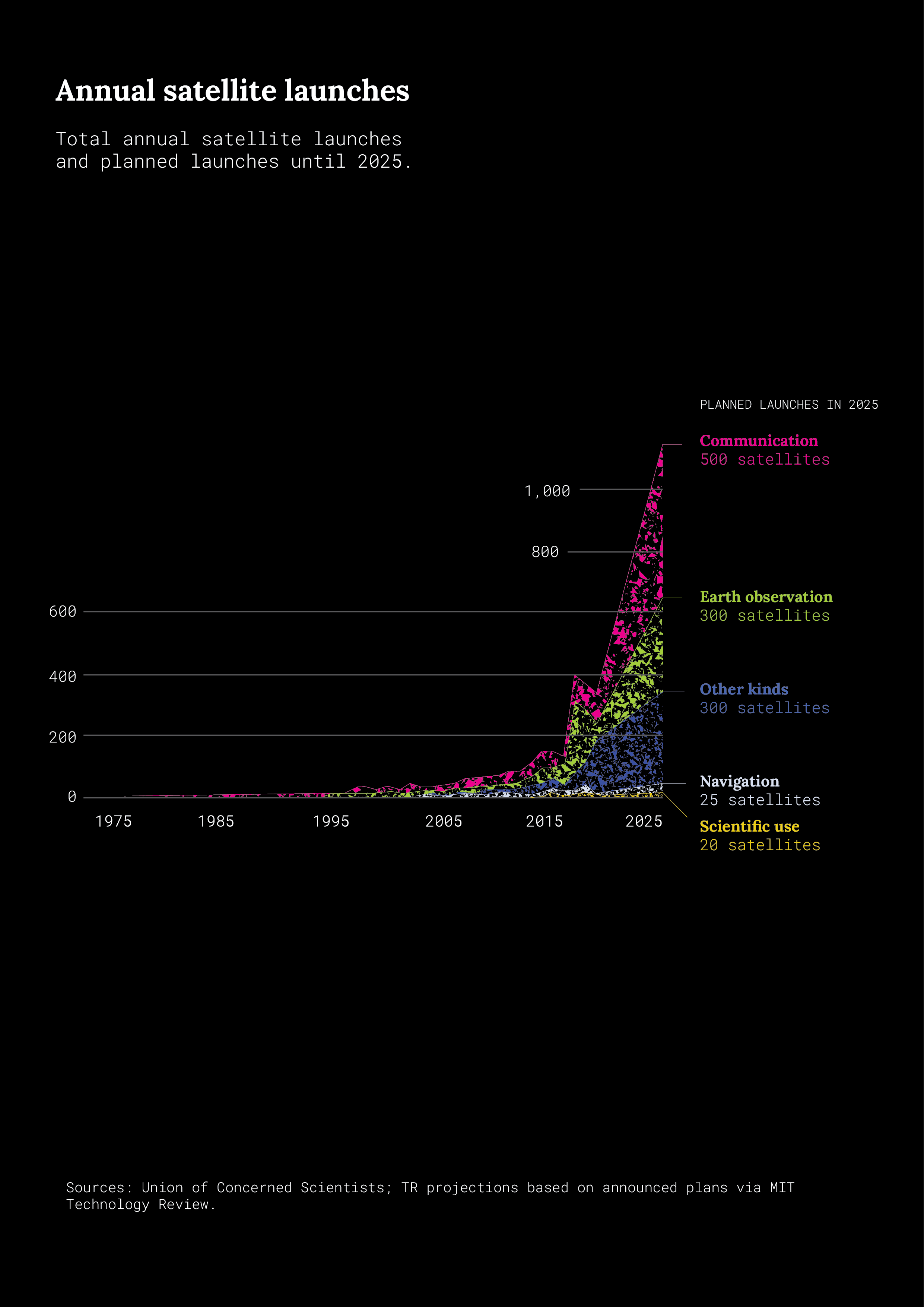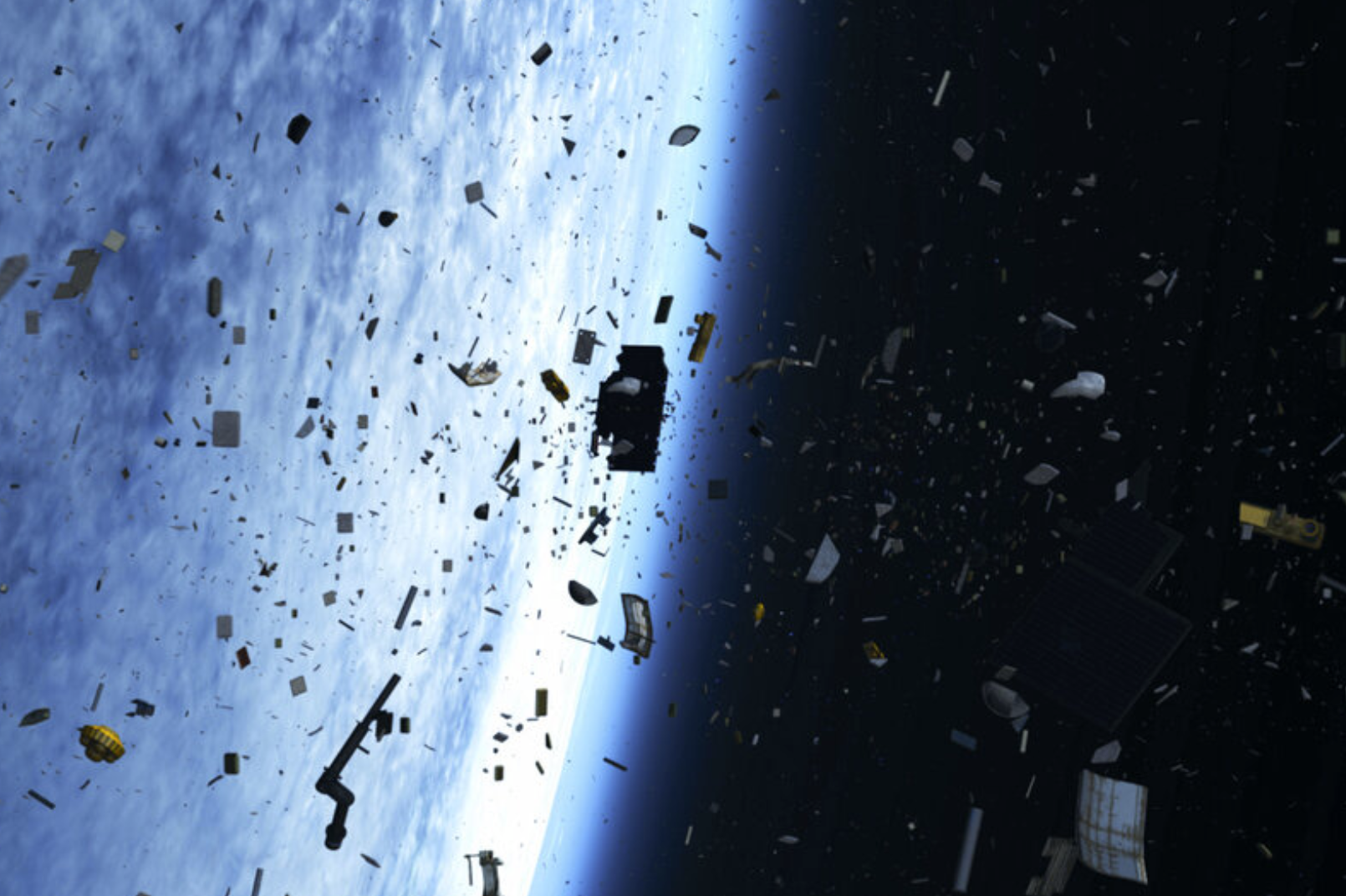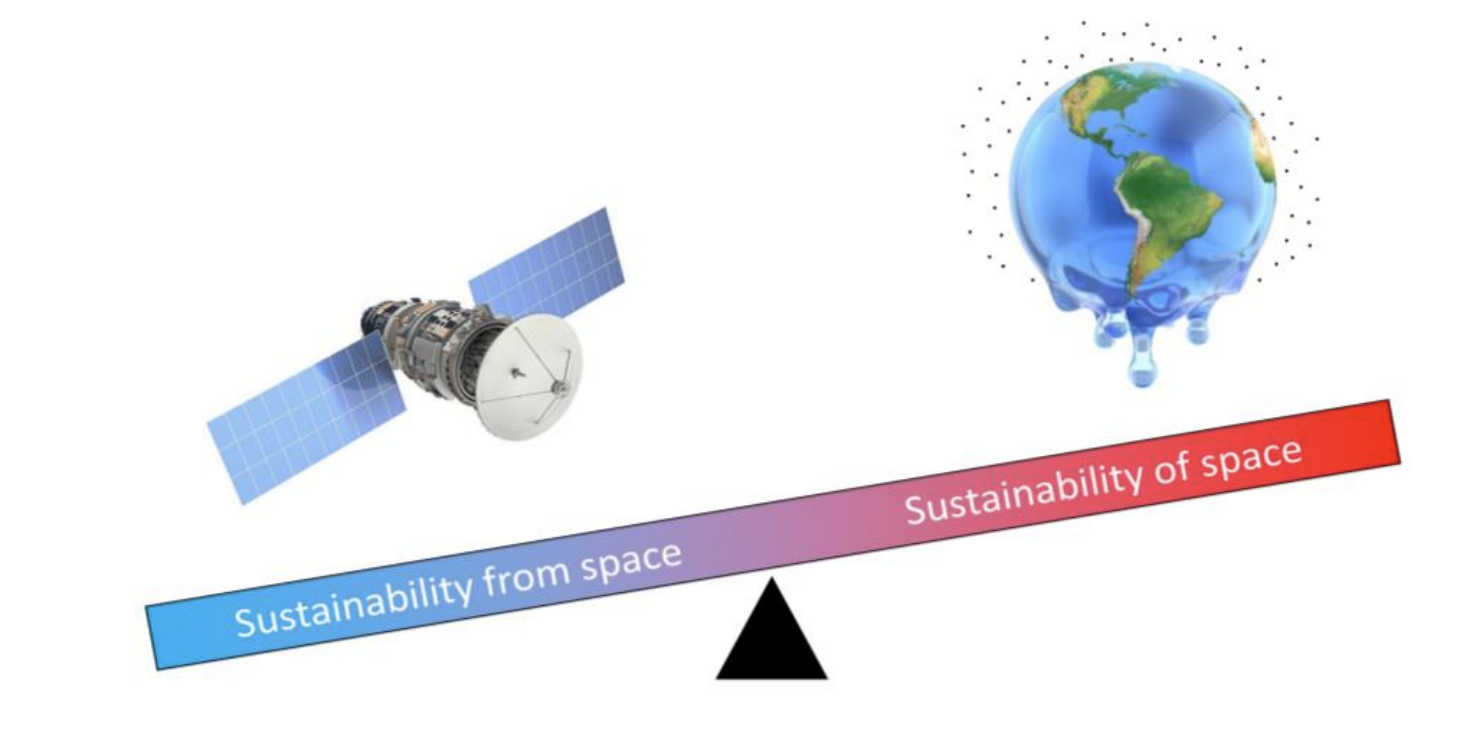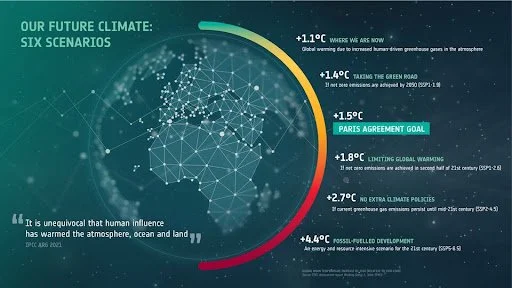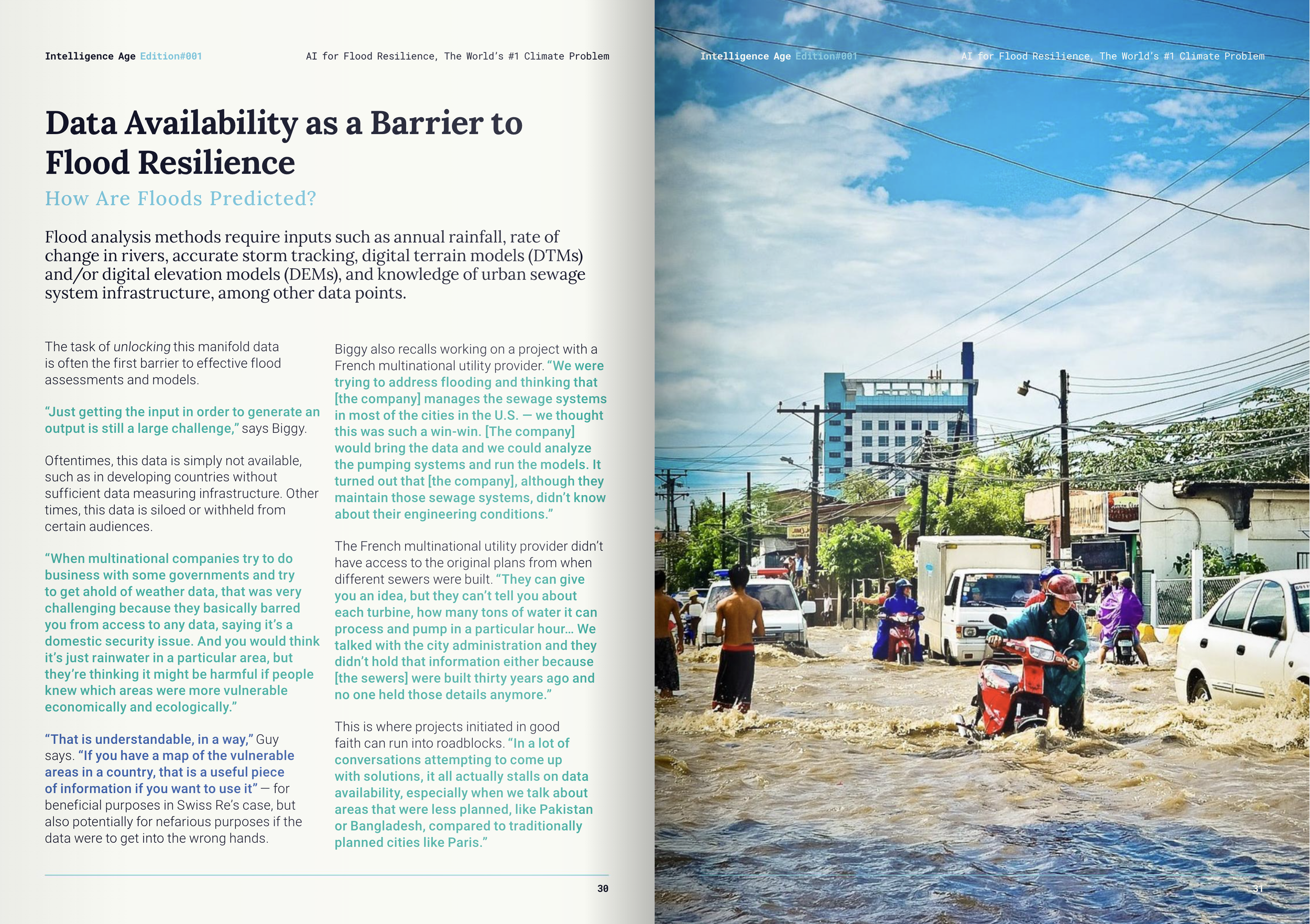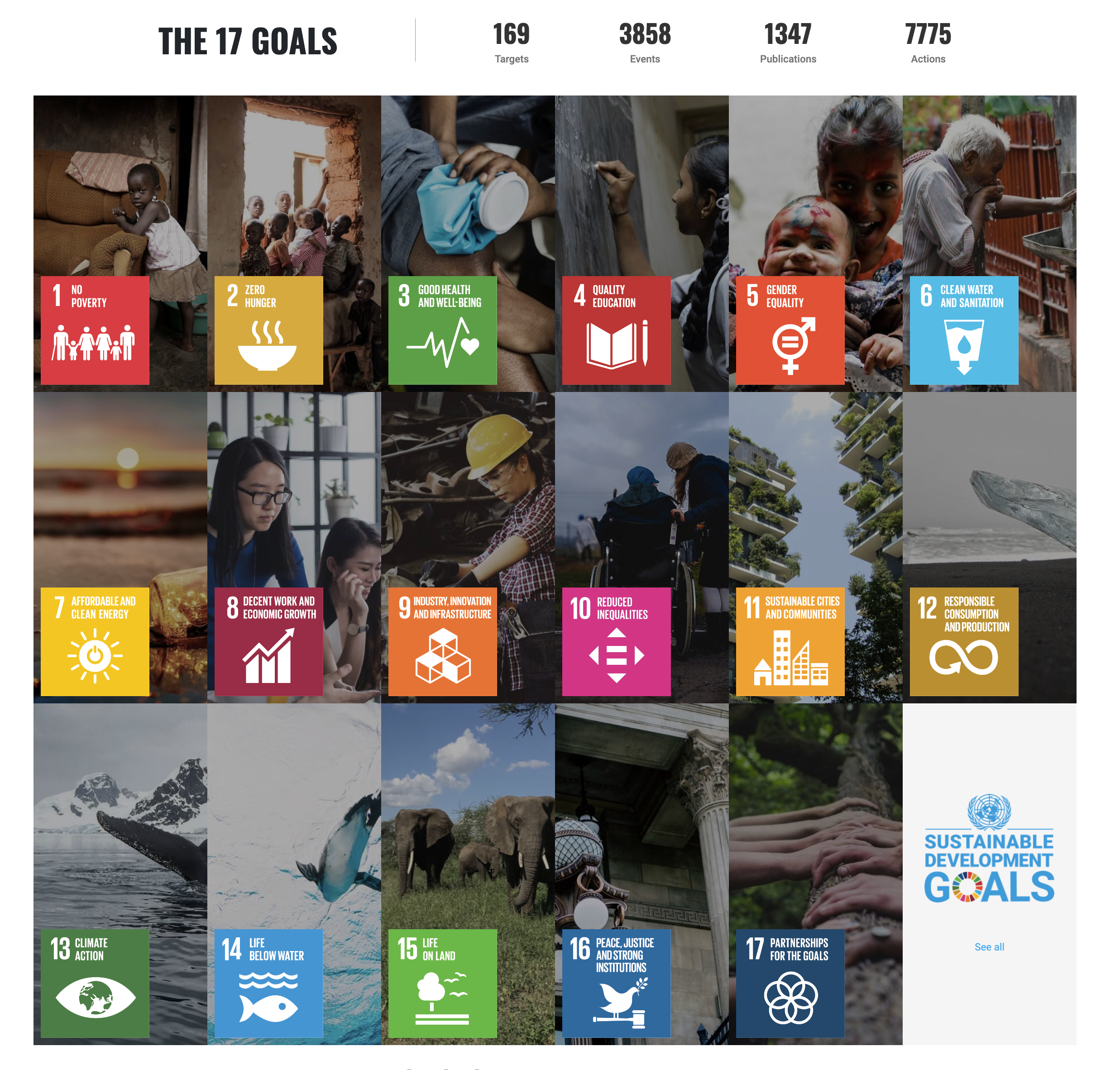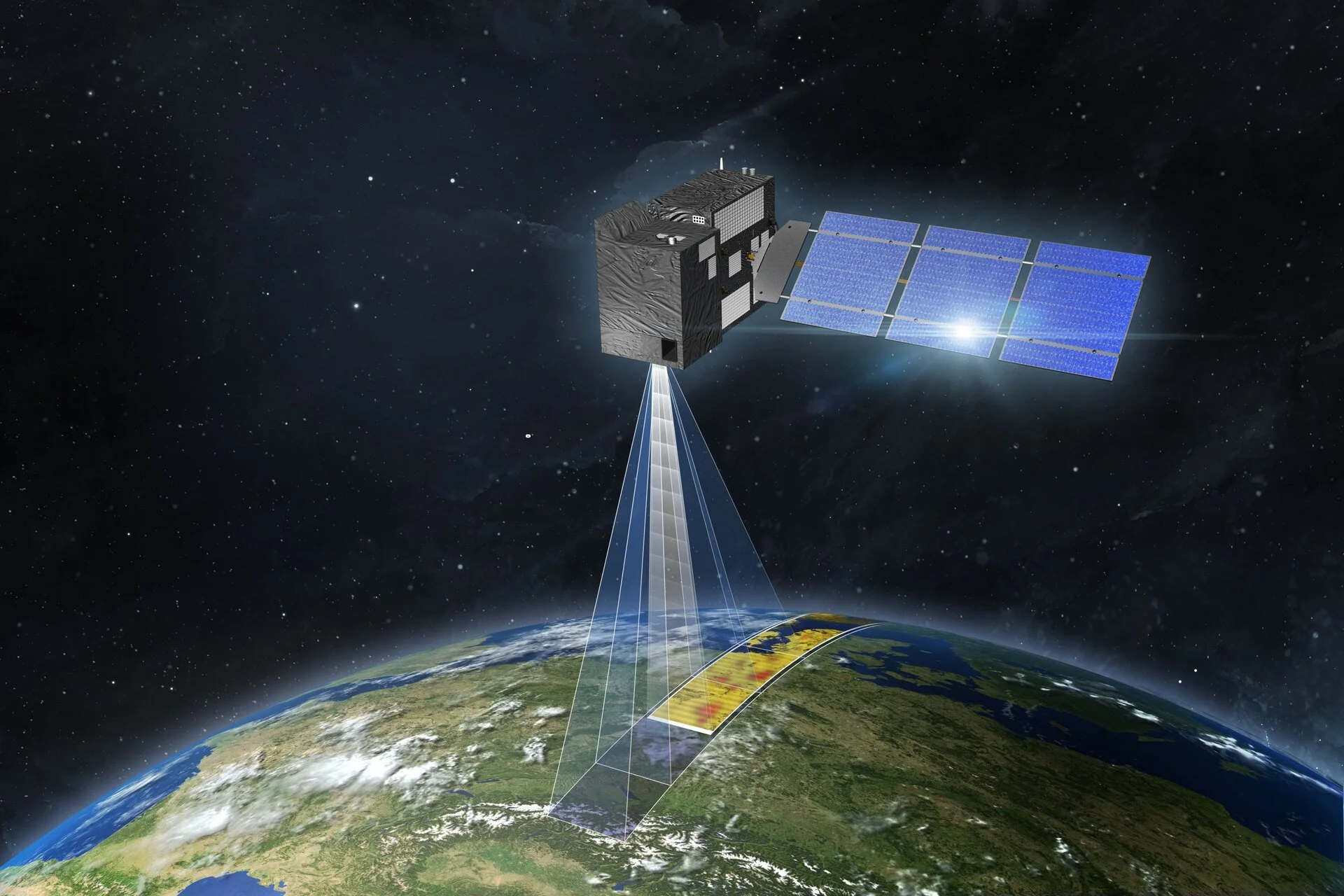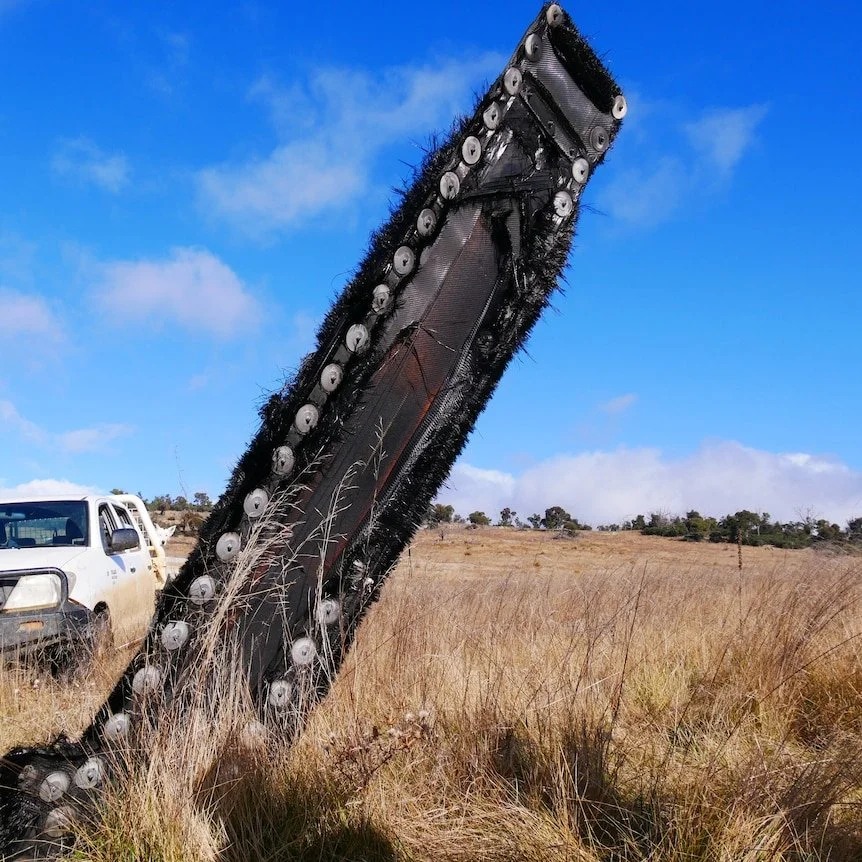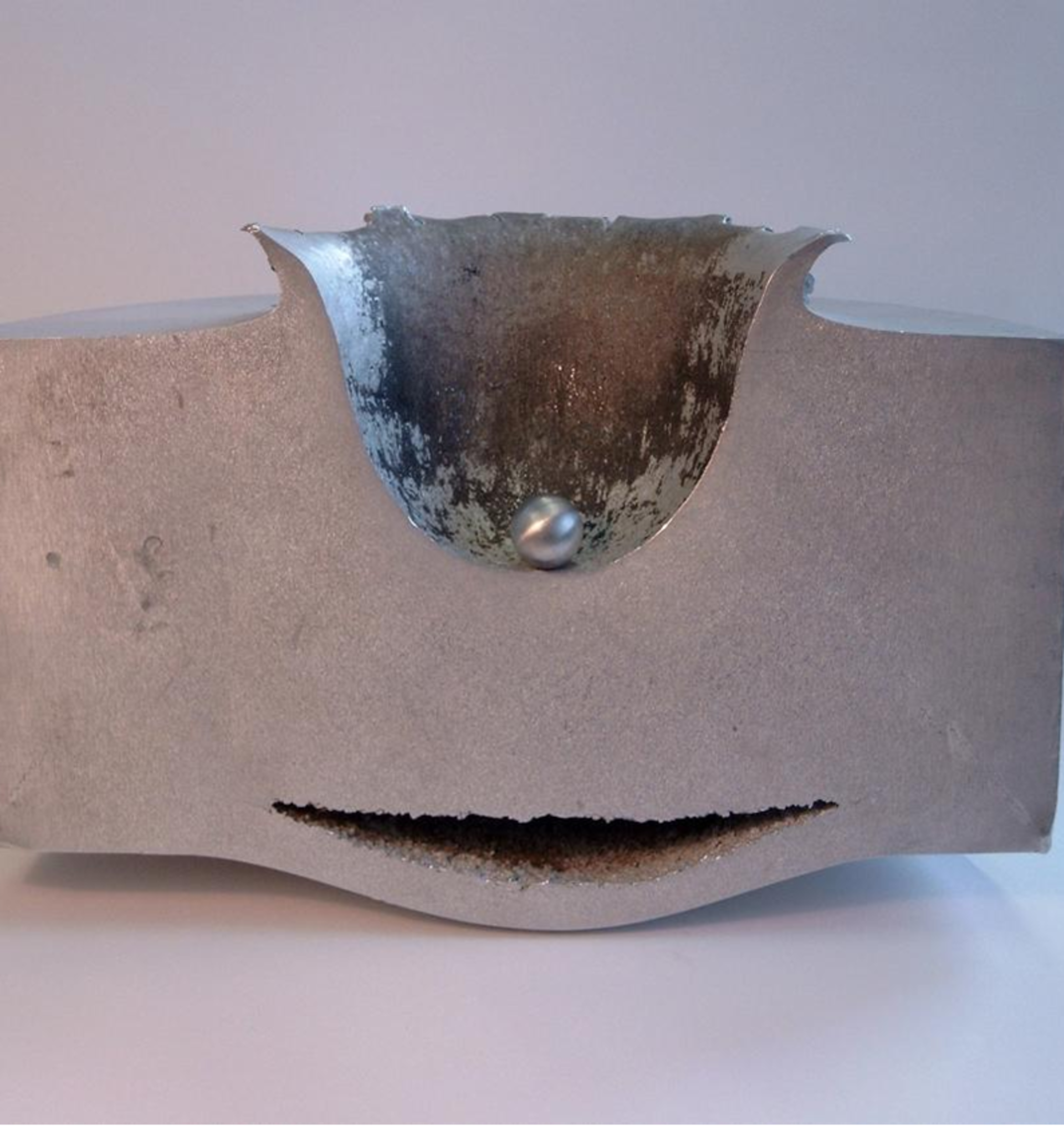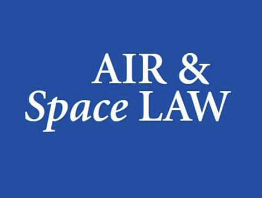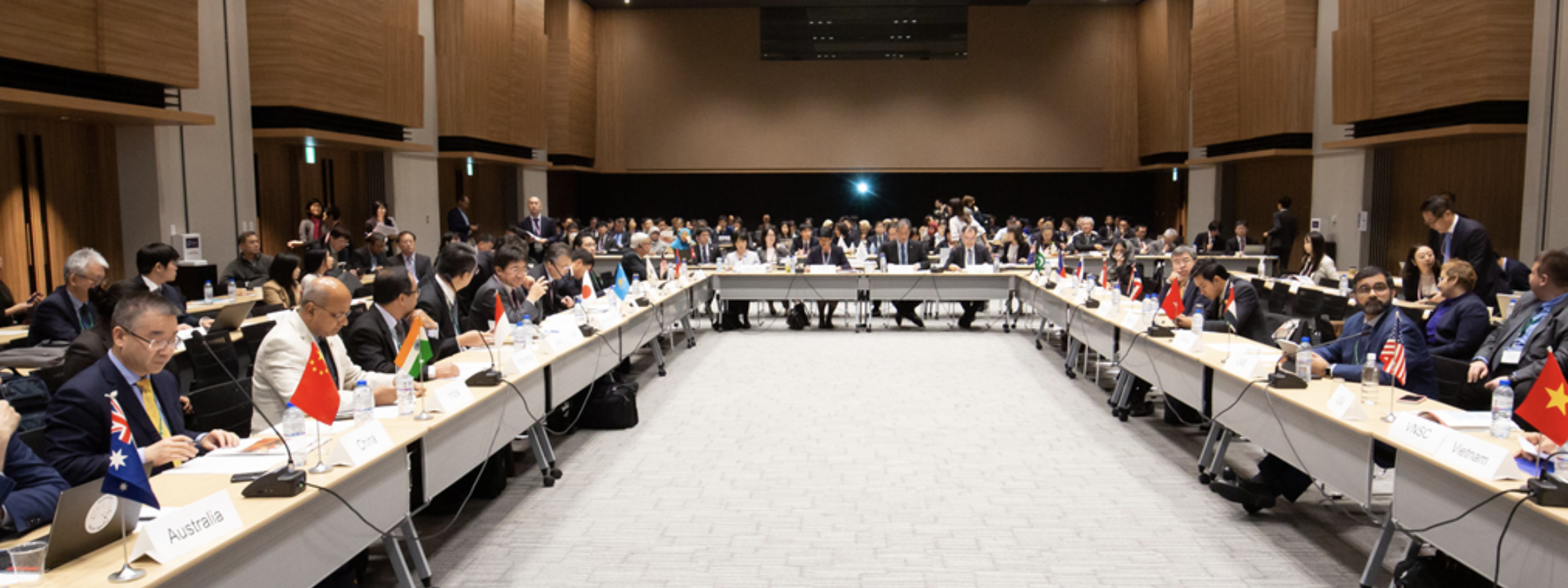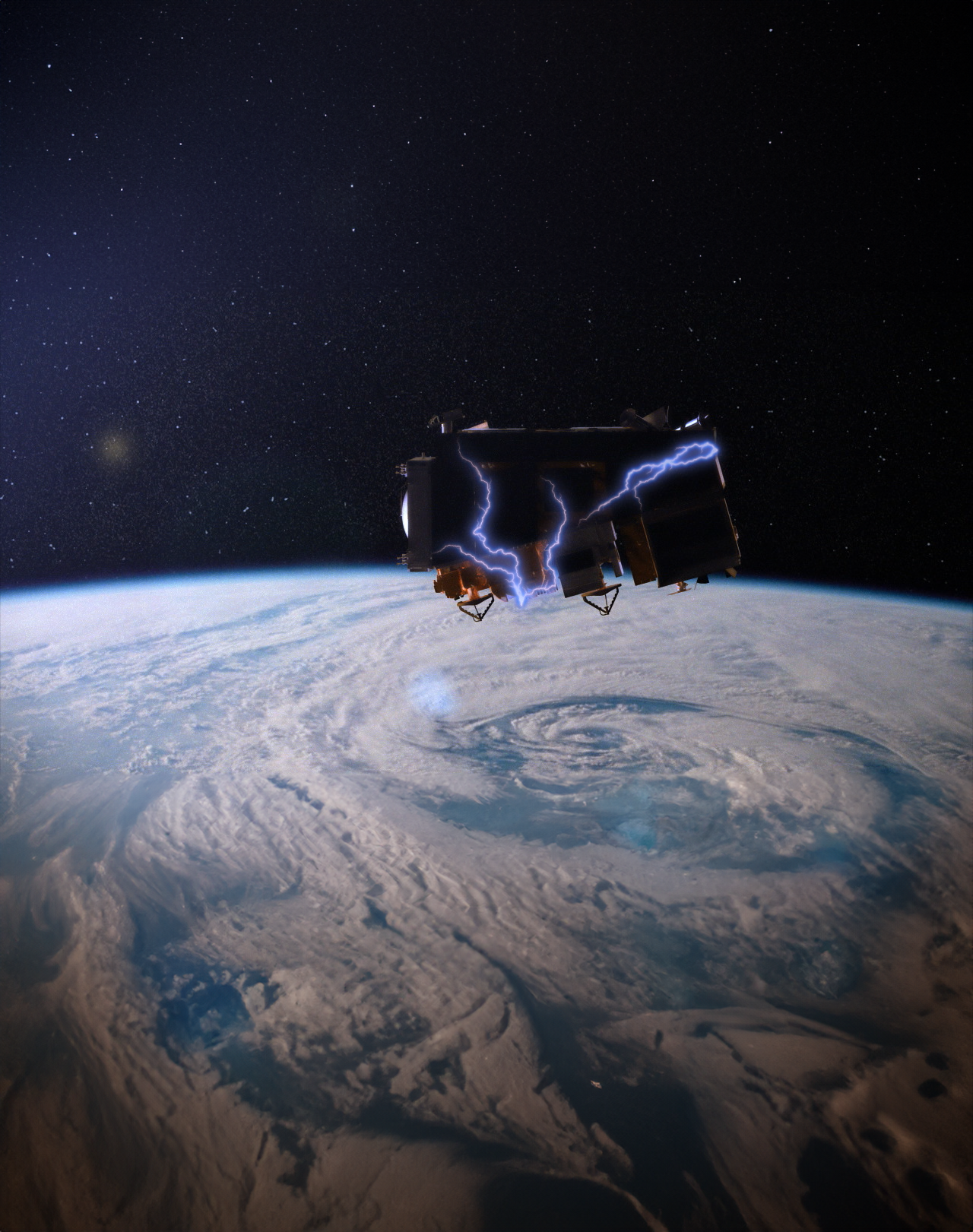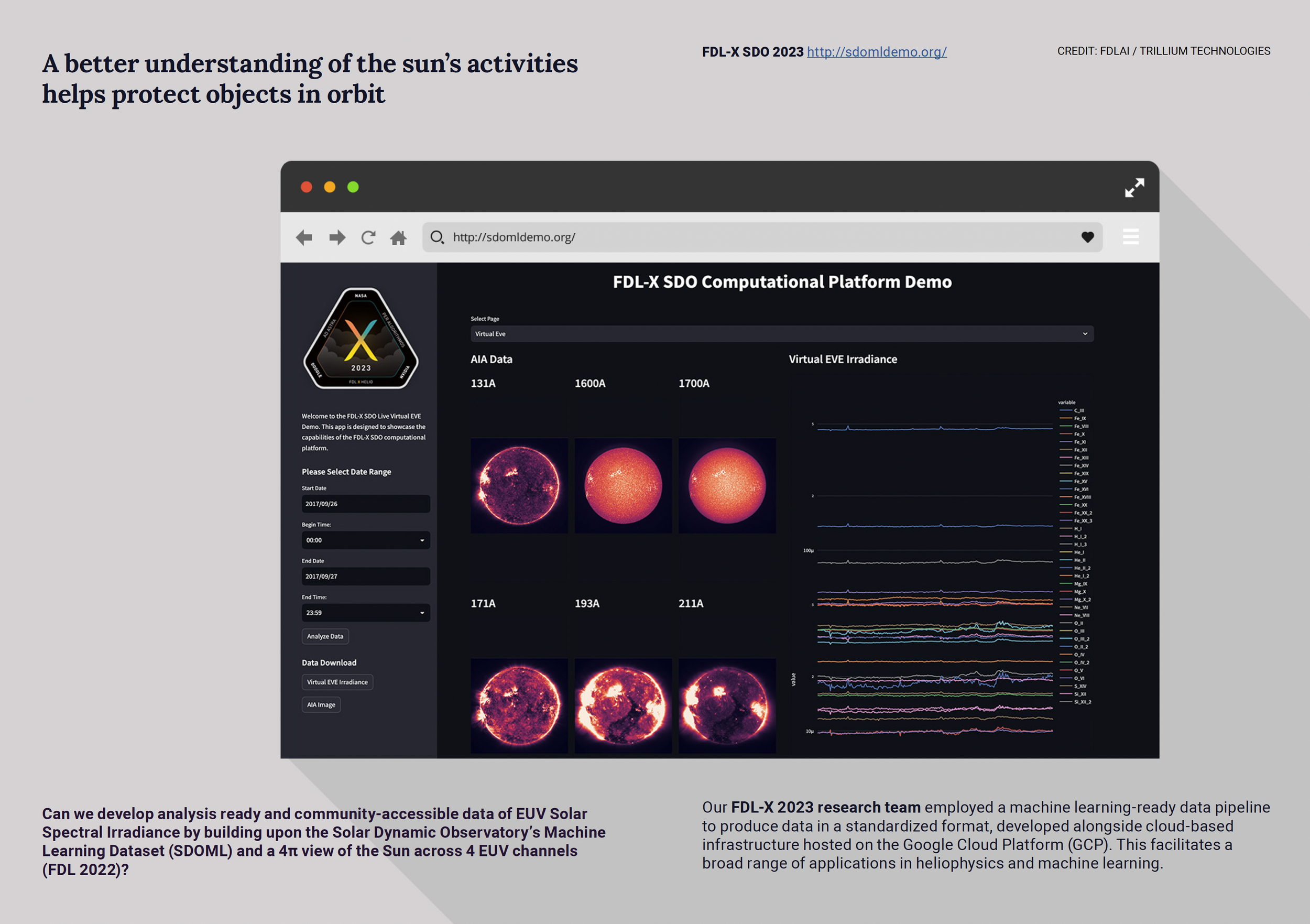Intelligence Age #002: The Tragedy of the Cosmos: Sustainability in Orbit and Beyond
Read and download Edition #002 below:
Watch the full interview on Youtube:
An astronaut tool bag dropped during a spacewalk can be seen orbiting Earth on Nov. 2, 2023. Image credit: NASA/JSC
Welcome to Intelligence Age
Dear reader,
“We are all astronauts on a little spaceship called Earth,” wrote Richard Buckminster Fuller in his 1968 book “Operating Manual for Spaceship Earth.”
There is a clear call to action in this message — to lead, to act — but also an implication that our resources are limited, exhaustible. What we have with us is what we have on hand. There will be no more once it is gone.
Wrapping one’s mind around sustainability involves this acceptance of finite resources, finite chances to do things the right way. The clock can only be reversed so far; even if time proves more complex than we now believe, for our purposes, we can only go forward.
If Earth is a spaceship then it must be continuously monitored, managed, and even repaired if needed. It must be treated with care and respect. It must be seen for what it is: vulnerable, precious, inherently limited. We have a duty to Spaceship Earth, just like we have a duty to space.
In this edition of Intelligence Age, we talk about this duty. It’s easy to ask: how can we succeed with space sustainability when we’re not able to adequately take care of our own planet? The pages ahead argue that the two are related, inextricably so.
Only from above can we see our big blue home for what it is. And as we look outward and upward, we are also called to look inward.
All abroad, astronauts. I hope this edition inspires you to build a more intelligent, sustainable future.
Ad astra,
Team Trillium Technologies
The two main debris fields are the ring of objects in geosynchronous Earth orbit (GEO) and the cloud of objects in low Earth orbit (LEO).
Image credit: NASA
The Era of Space Sustainability is Here
Since the first satellite was launched into orbit in the 1950s, little has been done to support the overall hygiene of Earth’s orbit and cis-lunar space. In recent decades, more and more governments and commercial players have launched or made plans to launch their own space missions. Associated challenges range from clouds of debris to anti-satellite tests, through to tardigrades sprayed over the pristine lunar surface and everything in between.
Enter the growing field of space sustainability. Without the ability to catalog, track, monitor and mitigate space activity, operations in space will not be possible in years to come. Space missions won’t be able to ensure clear paths for launch, satellites may collide and create cascade effects, and debris will accumulate. Lunar dust may stay elevated for years. The Kessler syndrome posits that the amount of objects in low Earth orbit (LEO) will grow so dense that collision between objects will become unavoidable, and the resulting space debris will trigger a cascade of future collisions.
When we talk about space sustainability, we talk about the viability of our public and private space practices. We talk about proactive, maintenance, and reactive measures to clean up Earth’s orbit. Perhaps more importantly, we talk about the future of humanity’s ascension to the stars and the kind of species we aim to be.
Space sustainability is at the heart of a new era that will growingly involve astropolitics. Today we have the Space Force, UK Space Command, China, and other players reframing space as a contested domain — and this dynamic will only intensify in the coming years, necessitating a here-and-now understanding of how we will protect the environment of space in sustainable and scalable ways.
Contributors
Chris Bridges
Dr. Chris Bridges (BEng, 2005; PhD, 2009) leads the On-Board Data Handling (OBDH) Research Group within Surrey Space Centre (SSC).
He researches software-defined radios, real-time embedded systems, machine learning computing implementations, and astrodynamics computing methods — all work towards newer ways of making space safe and reliable.
He has designed, built, and operated numerous CubeSat platform and payload systems and contributes towards computing hardware and software with SSTL, Airbus, and ESA. He is developing systems for the ESA VMMO Lunar Mission and quantum laser payloads for smallsats.
Minoo Rathnasabapathy
Dr. Minoo Rathnasabapathy is a Research Engineer at the MIT Media Lab, and Fellow, Future of Space at the World Economic Forum. Her work is centered at the intersection of space technology, policy, and action-driven partnerships to tackle pressing socio-economic and environmental challenges.
Dr. Rathnasabapathy’s focus and research interests include space sustainability and governance, climate, and broader cross-industry collaborations. Her work has been featured on CNN Business, BBC World News, and ABC News Australia.
Prior to joining MIT, Dr. Rathnasabapathy served as the Executive Director of the Space Generation Advisory Council (SGAC), a global non-governmental organization which acts in support of the United Nations Programme on Space Applications, based in Vienna, Austria. Dr. Rathnasabapathy was responsible for leading the operations, business development, strategy, and policy output for SGAC, a network that represents over 15,000 individual members across 150 countries.
Dr. Rathnasabapathy earned her PhD in Aerospace Engineering from RMIT University. She serves as a member of the World Economic Forum Global Future Council on Space. From 2018-2021, she served as Vice President of the International Astronautical Federation.
Thomas Berger
Dr. Thomas Berger is a space weather researcher and machine learning evangelist at the University of Colorado (CU) at Boulder. Tom directs the Space Weather Technology, Research, and Education Center at CU Boulder and is the Principal Investigator of the new Space Weather Operational Readiness and Development (SWORD) Center of Excellence, a NASA program to advance space weather forecasting models of the geospace environment: Earth’s upper atmosphere and magnetosphere.
His research focuses on developing machine learning applications for space weather prediction, working primarily on the critical need for better forecasting of the impact of space weather on low Earth orbit satellite trajectory and collision analysis.
Tom was previously the director of NOAA’s Space Weather Prediction Center (SWPC) in Boulder, Colorado, following his contributions to the National Solar Observatory as Project Scientist on the Daniel K. Inouye Solar Telescope (DKIST) facility developed by the National Science Foundation (NSF).
It’s Not If, It’s When: The Manifold Implications of Space Congestion
Unsustainable in the Long Term
Two decades ago, in October 2003, a series of solar storms generated the largest solar flare ever recorded. This event is known as the “2003 Halloween solar storms.”
Satellite-based communications and other systems were adversely affected for a number of days; aircrafts were advised to avoid certain regions; and power outages occurred. Auroras could be seen as far south as Texas in the United States.
In space, some satellites failed completely while others were temporarily damaged, and numerous satellites and spacecraft experienced downtime due to various issues on-board. Astronauts on the International Space Station (ISS) had to abscond to certain parts of the spacecraft in order to avoid increased levels of radiation.
“When we get a large geomagnetic storm like this,” says Tom Berger, “The havoc it creates in orbital space is really quite surprising. And in 2003 all the objects in the low Earth orbit (LEO) catalog were lost for two-to-three days.”
But why is that? “What happens when you have an extreme geomagnetic storm is that the atmosphere actually heats up,” Tom explains. This “heating up” expands the atmosphere higher into orbital space and changes the drag that satellites experience, and drag is a key part of predicting where objects are in orbit, how they are moving, and if they are going to collide with one another.
“And essentially they’re completely off from where the radar catalog had them just before the storm started. As space gets more congested, there is a distinct possibility that in an extreme geomagnetic storm the LEO catalog could be completely invalidated again, but this time with dire consequences as thousands more satellites have to pause collision calculations until the catalog is restored, which could take up to a week or longer.”
If you can’t track objects, you can’t tell if they’re going to collide. The ability to conduct conjunction or collision analysis is gone during a major geomagnetic storm. A conjunction tells us that two objects are close together, while a collision means that they have already met and been transformed into tens of thousands of pieces of debris.
This is more likely to occur now than ever before as an increasing number of objects are launched into orbit. No major collisions that we know of occurred during the 2003 Halloween solar storms; if the same event occurred today, we cannot say with certainty that the same would be true.
“More satellites were launched in 2022 than any year before that,” Minoo says. “ESA just released their 2023 Space Environment Report, and they cataloged more than 30,000 individual pieces of space debris that are larger than 10 centimeters that we know of… But the sheer volume of the objects that have not been tracked or are currently too small to track is in the millions.”
According to data from ESA, there are currently 36,500 pieces of space debris in orbit greater than 10 centimeters in size; 1,000,000 pieces of space debris between one and 10 centimeters in size; and 130,000,000 pieces of space debris between one millimeter and one centimeter in Earth’s orbit.
The report states: “The adoption of space debris mitigation measures is improving, but, given the sheer number of new satellites and amount of existing debris, the rate is still not enough and our behavior in space appears to be unsustainable in the long term.”
Most of the new launches in recent years have been into LEO. “Space may be unfathomably large, but the regions with economic value can be shockingly small,” says the ESA report. Only a narrow band of altitude is suitable for communication purposes, for example. The resulting congestion means that a collision could be catastrophic for a specific function — like weather monitoring and forecasting — and to the rest of the objects in similar orbits.
“As we think about our reliance on space technologies, we think about the people in remote areas that use these satellites to connect to the internet, which is a basic human need. We think of the increasing coverage of Earth observation satellites that allow us to better understand and monitor climate change. And we think about the economic cost of industries that rely on satellite technologies,” says Minoo. “It’s really a balance of how many objects we have in space versus our reliance on these technologies.”
Solar storms aside, we don’t know the exact locations of the objects we are tracking in Earth’s orbit with 100% accuracy. “It isn’t just that we have to track all these objects, we have to track them sufficiently well that they don’t have any error bars associated with them,” Chris says. “So you might say: we know where this satellite is, plus or minus five kilometers. These are huge distances… and there’s a good half of the catalog that we haven’t tracked for over a year.”
“I think the honest answer is that we don’t know,” says Tom. “We don’t track most of the debris in LEO. We only track the big stuff. And to your point: the big stuff has lots of uncertainties associated with it, either because we don’t track it often enough, or, ultimately, the largest source of uncertainty is space weather.”
“The environment is changing, the density is changing constantly, even with smaller storms, and objects are moving around. So as soon as an object leaves the radar beam, we don’t really know where it is. And that’s why we put these uncertainty bubbles around it. And we end up with lots of uncertainties as to where things are, and many more collision warnings than we would otherwise have if we could shrink those uncertainty bubbles.”
Tom goes on: “A) We don’t know how much debris is in LEO; B) We don’t know where it is; and, C) we don’t know if it’s colliding.”
The problems of conjunction and collision today are clear and present as more and more objects occupy the same altitude bands in Earth’s orbit. “We need to understand and observe these things with a much higher fidelity than we have before,” says Chris.
Starlink train visible on March 26, 2020 over the Canadian countryside.
Image credit: Alan Dyer/Stocktrek Images via Getty Images
The stratospheric rise of objects in space
ESA’s Space Environment Report 2023
ESA’s Space Environment Report 2023
Kessler Syndrome: The Creation of a Debris Belt
Collisions can lead to a breakdown of object utility, severing vital data or functionality from reaching Earth. They can also lead to space debris that can then collide with other objects in Earth’s orbit, creating yet more debris and leading to a cascading chain reaction called the Kessler syndrome.
Originally described by Donald J. Kessler in his 1978 paper “Collision frequency of artificial satellites: The creation of a debris belt,” the Kessler syndrome states that as the number of satellites in orbit increases, so too does the probability of collisions; collisions beget fragments which beget more collisions, and so on.
“There are two ways you can think of this: we think of the short-term risks of collisions directly between satellites, and also the long-term risks of the Kessler syndrome which leads to a cloud of small debris pieces that really threatens damage to satellites in the long term,” says Minoo.
One way to mitigate the effects of the Kessler syndrome is to ensure that objects are removed from space once they’ve reached the end of their lifespan.
Since the start of the space age in 1957, humans have launched 6,410 rockets and 15,760 satellites into orbit, according to ESA. Of these objects, about 10,550 are still in space, and 8,400 of them are still functioning. This leaves over 2,000 out-of-use objects in space of all sizes which are moving at extremely high speeds.
“There are not enough satellites that leave these heavily-congested orbits, particularly in LEO, at the end of their lifecycle,” says Minoo. “There is then a risk of fragmentation that evolves into a very dangerous cloud of debris which can linger on for many, many years.”
“As a scientist, I always come back to this: we need more measurements as to what is going on in LEO. We need radar, we need optical tracking, we need creative ways of in-orbit measurement as to what is happening up there to really know what is going on. But I also thoroughly agree with Minoo that it is critically important that we get on this now, because it’s almost guaranteed that the Kessler syndrome will eventually happen,” Tom says. “And when it does, that essentially means that an entire region of the orbital space is unusable, and perhaps even launches through that space are unusable.”
Every launch into space has to go through Earth’s LEO region. And if it’s full of fast-moving, untracked debris, it becomes increasingly difficult to safely plan launches for crewed or uncrewed missions.
“For me, it’s not necessarily an ‘if,’ it’s more of a when,” says Chris. “The Kessler syndrome is probably already happening.”
“There’s a lot of space technology that we rely on and it’s in different orbits. GPS being in MEO (medium earth orbit), it’s not really going to be threatened by any major space weather event because drag is not an issue at those altitudes and the satellites are hardened to radiation,” says Tom. “The GPS system is fairly secure. It will be there. The question is, can it transmit through LEO if LEO is a cloud of debris? That’s a TBD question.”
Some researchers also speak of a “Space Sustainability Paradox” (Wilson, et al.). This paradox is explained as follows:
“The recent growth of the space sector, spurred by a surge in private actors, has led to a sharp increase in our ability to address societal challenges through space data. However, this has exacerbated an already critical situation in space: the proliferation of space debris and a critical expansion of space traffic which is leading to high levels of orbital congestion. In parallel, increased levels of spacecraft production and orbital launches are also heightening the environmental footprint of the sector. This might lead to a paradoxical situation whereby the use of space to support the Sustainable Development Goals (SDGs) becomes unsustainable from the perspective of both the Earth and space environment.”
Initiatives do exist for active debris removal (ADR) services. According to Minoo, there are an increasing number of commercial players who are demonstrating and offering these services to satellite operators, and a number of up-and-coming space traffic management (STM) providers as well.
“And that really lends itself for end-of-life mission planning. It also lends itself to improved tracking,” says Minoo. “And we consider not just tracking, but what we call D.I.T.: detection, identification, and tracking of an object. I think what we also need to encourage is data sharing between operators. As much as allows, without sharing proprietary information, but certainly this international collaboration and coordination between actors will really serve to decrease the Kessler syndrome.”
American Geophysical Union: Advancing Earth and Space Sciences
The Space Sustainability Paradox
Space Sustainability for Earth Sustainability
“We should absolutely be concerned about the Kessler syndrome,” says Minoo. “Whether it’s at a point now that it’s completely detrimental to the orbits that we use is questionable, but it’s very similar to climate change. We need to act sooner rather than later.”
To continue the climate change comparison, the responsibility to behave in a responsible manner in Earth’s orbit is also diffused to a certain extent. As more and more private companies enter space, guidelines around best practices must become more socialized and universally applied for real improvements to be made. “A good, well-known object that is shared about — and actually many of the new operators tend to operate in a much more transparent way — multiplied by a bad statistical number is still a bad number,” says Chris.
There is also the question of remuneration — not just whether or not established and legacied space nations have a responsibility to clean up their objects from orbit, but whether they have any sort of duty to assist emerging nations with sustainable capability-building as well. If the right technologies are shared with the right emerging space nations at the right time, negative or unsustainable practices could be precluded.
Speaking of emerging space nations, Tom says that “one of the arguments that they can legitimately use is that the established space nations didn’t have to worry about orbital debris mitigation — like coal-fired power plants, which were cheap, easy ways to get your country onto a very quick energy-intensive path. All of the established countries used coal-fired power plants for decades and centuries to establish where they are now. And now we’re saying to other countries: don’t do that. It’s a tough argument to make, but it has to be done.”
“I keep coming back to the analogy of space being like the oceans. There is a commons there and everybody benefits from having healthy oceans. And yet it’s very easy for an individual operator to go out and neglect any sort of responsibility, and dump bilges and do whatever they need to operate most efficiently and most profitably. I view space kind of the same way,” says Tom. “And I think that’s an optimistic view because we have centuries of dealing with the oceans and those policies.”
We need to find that equilibrium between regulation and not pushing people into the synonymous climate change problem where it's not your problem until it's at your doorstep,” Chris says. “What we need to ask ourselves is: what the risks are to people on Earth?”
Satellites in Earth’s orbit allow us to save lives through weather monitoring and forecasting that gives us advanced warning of storms and other major weather events. “These things are critical for us to help predict what happens on the planet in order to save lives,” says Chris.
Without access to data from space, we cannot solve all of our issues here on Earth, like flooding and other natural disasters, which we covered in edition #001 of Intelligence Age, “AI for Flood Resilience, The World’s #1 Climate Problem.”
“The forecasting observations used in weather and climate predictions are all made by LEO satellites; those are the polar orbiting LEO satellites that are down in the thick of things in the most crowded neighborhood making the key measurements. Thousands of millions [of measurements] per day go into our weather and climate models so we can understand what’s both coming in terms of weather and what’s evolving in terms of climate.”
“If we were to lose those satellites because of increasing collisions in LEO, that’s our weather forecast gone. That’s our climate monitoring gone,” Tom continues. “I don’t think anybody wants to see that happen. I think it would be a major impact on society for weather forecasts to go back to what they were in the 1960s where balloons and measurements of local temperature were all you had.”
Lives can be saved by activities in orbit in the short term through functions like extreme weather prediction, but also in the long term through a focus on Earth observation data for climate change mitigation.’
“One quote I often like to say is that 50% of our essential climate variables can only be measured by space,” Minoo says. “And I think that is a really interesting and poignant example of how space matters to understanding sustainability on Earth. One example I can give you is that the MIT Media Lab, we are looking at the Dual Energy Climate Challenge. So thinking about equitable, accessible, cheap access to energy, but at the same time, about emissions and using space technologies to meet this balance of equitable energy in a way that is not going to lead us to emissions to a point of 1.5 degrees Celsius.”
The MIT Media Lab defines the Dual Energy Climate Challenge as an effort to accommodate escalating global energy demand while minimizing greenhouse gas emissions.
“One thing that comes to mind that is very dear to my heart is the 17 Sustainable Development Goals (SDGs). We are now halfway to meeting our goals towards the SDGs, and of course each SDG has indicators and metrics and there’s a way we can use space technology in order to track and monitor how we’re progressing towards these goals,” Minoo says. “So it is fundamental in developing and adopting strategies that are going to be sustainable to Earth, but also in helping us monitor and quantity and verify how we are doing with implementing these strategies.”
The 2030 Agenda for Sustainable Development was adopted by all United Nations Member States in 2015; at its core are the 17 Sustainable Development Goals. Each one is a call to action for global partnership, for the good of all humankind.
Now in 2023, we are halfway towards the 2030 end-date for realizing these goals, from ending world hunger and providing clean water to all, all the way to peace, inclusivity, and justice across institutions.
As Minoo mentions, Earth Observation (EO) data from space is crucial to many of the SDGs — research has identified that EO data has the volume, variety, veracity, and velocity suitable to support large-scale climate change research.
According to the 2020 Digital Universe report, the amount of data available to us will double every two years. Examples of the application of EO data to climate change research include:
Measuring change in the polar ice caps
Predicting the effect of snow on water circulation and sea level changes
Understanding water quality, water color, and sea surface temperatures
Visualizing changes in vegetation due to temperature change
ESA states: “Satellite observations have formed an integrative part of the evidence-based assessment of climate change impacts on land, freshwater, coastal, mountain, and polar systems, particularly over areas where in situ measurements are unavailable. The role of Earth observation has evolved to support national entities and stakeholders to build resilience and work towards their net zero commitments.”
To ensure a habitable future climate, and the success of the UN’s SDGs, continued and scalable access to space and data from space is needed. This means tackling issues of space sustainability head on, and learning from human psychology around climate change to proactively solve problems of diffused responsibility and liability.
“That’s a real worry for me because we see that the planet is underwater and on fire and we still can’t do anything about that, and it’s literally destroying people’s homes,” says Chris. “So if we can’t deal with that, I don’t feel too secure about what we can do [in space].”
”Now the thing that does make me feel quite pleased about everything here is that most people in the space industry acknowledge this and actually we’re all a sensible bunch. So we know the direction we need to go. And if we give people the right excuses or the right economic framing we can definitely nudge them in the right direction, because as Minoo said, these behaviors are critical.”
ESA, Possible Future Temperature Rise
The United Nations’ 17 Sustainable Development Goals
Edition #001 AI for Flood Resilience, The World’s #1 Climate Problem
The United Nation’s 17 Sustainable Development Goals
Research Earth observation big data for climate change research
2020 Digital Universe report
ESA Earth observation supports latest UN climate report
SpaceX rocket debris lands in sheep paddock, Australian Space Agency confirms
Even tiny pieces of space debris can have catastrophic effects. This image shows the result of a lab-test impact between a block of aluminum and a small aluminum sphere traveling at nearly 7 kilometers per second.
Carrots vs. Sticks: Good Behavior in Earth’s Orbit and Outer Space
“The whole cloud of debris that we have now,” says Chris.
“Much of that is historical from the late 50’s… lots of organizations track these things and are trying to figure out how we assign, I don’t want to use the word blame, but liability, and how that works in an intergovernmental world order.”
The nations that began venturing out into space in the 1950s — the United States, the Soviet Union — did not have an eye towards sustainability when they set their sites on outer space. And those that followed in the succeeding decades followed suit. Now, faced with the fear of a junkyard in our Earth’s orbit, how do we hold new players accountable by rules that the old players didn’t have to abide by?
These new players include commercial operators, more of which are entering the picture each year. “Do we think this is a good opportunity to bake in some good behavior here to maintain that safe environment?” Chris asks. “I think people play hard and fast and loose with these things… There are companies that can sign up to guidelines that say everything will de-orbit within twenty-five years, and yet governments will still give out space licenses for orbits that could last centuries.”
We don’t think enough about the stakeholders here in space sustainability, which are actually taxpayers and the general public; more often the shareholders win out because companies are there to make money, they’re not there to make the planet greener.”
Social and Economic Incentives For Sustainability
Minoo’s work with the MIT Media Lab concurs with this idea that better incentives need to exist for commercial and governmental organizations to play nice in space.
“We launched a project with a consortium between MIT Media Lab, ESA, BryceTech, the World Economic Forum, the University of Texas at Austin, and the EPFL Space Center in thinking about good behavior and good actors,” says Minoo. “We live in a world of rating systems… and we realized that many industries have rating systems to establish sustainable behaviors and practices. One such example is the green building space.”
“We thought: what if we take this idea of a rating system and try to apply it to the space industry? Talking with both commercial but also government actors in space, we realized that there is a want to showcase sustainable behaviors,” says Minoo. “I think there’s a greater need for the carrot rather than the stick in this.”
Minoo and others developed the Space Sustainability Rating (SSR) on a model that allows points to be awarded for good behavior. The SSR aims to provide clear decisions and actions that operators can take to improve their SSR proactively, in orbit, and during their end-of-life mission planning.
“A mission might get a platinum, gold, silver, or bronze rating; something that’s public-facing that showcases what operators want to do,” Minoo says. “And I have to say that we have seen a number of commercial companies really step up and want this initiative, want to be involved in this.”
“[The SSR] has two additional advantages. It offers a bit of peer pressure. So to your competitors, it showcases what level of sustainability you’re pursuing. And it also provides some economic incentives. We’ve been working with space insurance companies to see how we might be able to provide these economic incentives,” says Minoo. Economic incentives to space sustainability could include lower insurance costs or higher insurance payouts associated with a stronger SSR.
In a capitalist climate where profit is king, it may be surprising that the commercial sector would volunteer to constrain their operations. But perhaps the inherent benefits are incentive enough.
“I think it’s a process of becoming more aware of what’s up there and what can happen,” says Tom. “There is going to be an incentive to protect your assets that you’ve launched now and in the future.”
According to NASA, collision risks in LEO threaten at least $35 billion of assets — and only 8% of this value is insured.
“But I am a little bit suspicious of just saying that the commercial industry will blossom and take over and solve all the problems because, at the end of the day, they are profit-driven. And therefore, it’s hard to see where you’re going to make money, for instance, either mitigating space debris now or increasing space sustainability in the future.”
“So I tend to come down on the side that it needs to be government agreements at the top and perhaps then, through regulatory or incentive mechanisms, it can trickle down to the commercial side where they can find a niche where it is somewhat profitable for them to operate,” says Tom. “For instance, if you look at the debris removal question, companies are already doing this… but they’re coming to governments and saying: do you have large-scale contracts for us to sign up to do this? So I think it really does have to start at the government level.”
Space Sustainability Rating in Support of the Development and Adoption of Regulatory Guidelines Related to Long-Term Sustainability
Minoo offers another view. “We’ve seen a number of private sector actors really take the step forward to sign up to voluntary mitigation guidelines that are really industry-led,” she says. “The private industry is not waiting for slow government policies to take shape; they’re really leading the framework and the initiative to be sustainable and showcase their sustainability strategies.”
“I think there are lots of new people in the space sector who have those higher ideals but they can struggle against bigger more established players, and we have to think about what could go wrong there to then figure out how to grow these ideals and behaviors with as little stick and as much carrot as we can afford,” says Chris.
”There has to be a role for government and intergovernmental policy bodies like the UN to try and negotiate with these large countries that have produced most of the space junk to date,” says Tom. “While I applaud the commercial efforts and I hope they grow and succeed even more, I really do think there needs to be a governmental function here, both on the policy side and to decide these responsibility and liability issues.”
Liability is a strong word, and it is not used lightly. The fact is that many of the remnant objects in space from the mid-twentieth century are rocket bodies, tumbling at high speeds and full of fuel. These objects are resource-intensive to retrieve, and often difficult to attribute to a given space agency.
On unsustainable space practices, Chris says that “unless we can observe it, we won’t be able to point it out. I think if, all of a sudden, we had radar stations and assets on the ground and people went ‘look at this behavior, we knew there was a conjunction and you did nothing to stop this,’ and it became known that this behavior is severely frowned upon, the question would be: would that translate into no future government contracts or new business for that operator?”
The Pristine Environment of the Moon Has Been Broken
Another example of potential governmental liability: on April 11th, 2019, an Israeli spacecraft crashed into the Moon during a failed landing, releasing thousands of tardigrades onto the lunar surface. Tardigrades, also known as water bears, are microscopic animals that can survive under extreme conditions.
“We believe the chances of survival for the tardigrades… are extremely high,” said Nova Spivack, an executive for the mission. If the tardigrades survived the crash landing, they would be the second species of Earth life on the moon, after humans.
“What this means is that the so-called ‘pristine environment’ of the moon has been broken,” said Open University professor of planetary and space sciences Monica Grady for BBC.
The Outer Space Treaty, adopted by the UN General Assembly in 1966, bans “harmful contamination of space and celestial bodies.” It also bans nuclear weapons and weapons of mass destruction, as well as national appropriation or claims of sovereignty in space. But the mechanisms for holding treaty nations responsible for infringements are not clear, and precedent is not there to support reactive measures.
Also, not all space-faring nations are required to sign this treaty or other treaties, or comply with their mandates. In January 2023, for example, Saudi Arabia withdrew its signature from the Outer Space Treaty.
“How does a new country operate in space?” Chris asks. “Do they adopt things, are they picking and choosing [what to adopt], what are they doing?”
“If you were a business and you wanted to, for instance, go mine the moon, or put up another 10,000 LEO satellites that are tracking something that will make you money… is a bad rating that important?” asks Chris.
Another example: the Artemis Accords are a set of non-binding principles outlined by NASA that set out guidelines and best practices for the safe and sustainable exploration of the moon and eventually beyond. The Accords were signed in October 2020 by about thirty countries, including Canada, India, Israel, and the United Kingdom.
Notably missing from this list are Russia and China, who have been bullish on their upcoming lunar missions. Russia and China are working together on their own lunar research station concept as a competing mission.
Earth’s orbit is one area of liability, but what about the risk of bringing Earth’s microbes to other planets? What about the potential for colonization or commercialization of interplanetary resources? At this greater, more existential scale, the questions of how to be a good interplanetary neighbor get infinitely more complex.
Tardigrades: 'Water bears' stuck on the moon after crash
The Outer Space Treaty
Artemis Accords
There Are Thousands of Tardigrades
on the Moon. Now What?
Inroads for Collaboration in Outer Space
But there is reason to be optimistic. “Something I like to keep up to date with is the number of member states who are stepping up and joining the conversation about space sustainability… in the past decade, UN Committee for the Peaceful Uses of Outer Space (COPUOS) membership has risen by 40%, and it continues to be one of the biggest committees of the United Nations. What we’re seeing is that more and more emerging space nations are stepping up.”
“What we’re also seeing is many countries who are coming together to really utilize the platform of COPUOS in order to help their own national sustainability strategies. A couple of years ago, we saw Australia and New Zealand and Nigeria, who are defined as emerging space nations, joining with established nations like Canada, France, the Netherlands and the U.S. on long-term sustainability guidelines.”
The two biggest challenges that emerging space nations have are budgetary constraints and capability-building. One solution is to partner with developed space nations, but another is to band together amongst themselves. This is exemplified in the Asia-Pacific Regional Space Agency Forum (APRSAF), which was established in 1993 to foster space activities in the Asia-Pacific region.
Its National Space Legislation Initiative (NSLI) brings countries together to implement a regional framework and align on ideas and priorities to present to COPUOS as a united front. Through this forum, emerging space nations can pool their resources and ideas and elevate their voice in larger forums like COPUOS.
Organizations like the Gnosis Network aim to promote collaboration across different sectors such as academia, defense, industry, and the political sector. They organize meetings and workshops to facilitate discussion and bring science and industry together; they also provide funding for joint projects and advanced studies in the realm of space sustainability.
“I’m encouraged by what Minoo has said about more and more countries signing up for UN COPUOS accords and policies in order to become part of the conversation, because that’s really what we need,” Tom says. “We need everyone to be part of the conversation from the start. If you’re a new nation thinking about getting into the space business, you should be trying to integrate sustainability and environmental concerns from the beginning.”
“More and more countries are realizing and acknowledging their need to build indigenous capabilities and utilize the space environment in a very responsible way,” says Minoo. “We’re seeing the push and the broadening of the table for these actors to come and have a voice on these very important issues.”
Trillium Technologies workshop at IAC 2023, "Intelligent Space Sustainability: How Can AI Help Shape Sustainability in Space?" featuring NASA SMD, Axiom Space, UNOOSA, UKSA, and ESA.
APRSAF
NSLI Initiative During APRSAF-28
The Technology Landscape of Space Sustainability
Cleaning Up Space Debris
How do you get debris out of space?
The answer sounds fantastical, reminiscent of adventures on the high seas: you capture your prey in a net, or harpoon it back to your ship.
“One of the missions I’ve been involved in is called RemoveDEBRIS,” says Chris. “We tested harpoon technologies as well as lidar.”
Lidar stands for “light detection and ranging” and is a remote sensing method that uses pulsed lasers to measure distances.
According to the RemoveDEBRIS website: “This mission will comprise of a main satellite platform that will be propelled to the International Space Station by a SpaceX Falcon 9 rocket, and then deployed by the NanoRacks Kaber systems into orbit. Once in orbit, a series of experiments will take place on how to capture space debris.”
The RemoveDEBRIS mission is co-funded by the European Commission and other partners and led by the Surrey Space Centre. It launched in 2018, and has since conducted experiments leveraging nets, harpoons, dragsails, vision-based navigation (VBN), lidar, and intelligent algorithms to snag space junk from earth’s orbit.
“But when you look at companies that are trying to move this work forward and trying to commercialize these things, there’s not necessarily business for them… it’s only when we put a number big enough or a timeframe short enough to worry a government that it becomes a political problem,” says Chris. “There are nudges that need to happen not just in the commercial sector, but within government as well.”
“They’re kind of counting on academia and industry to come up with some of the solutions, and actually for some of them to come up with the money as well. And I don’t think that necessarily pays the bills for everyone… I think governments can do better in putting more focus on developing that technology with academia and industry to then get things to the point where they can go: hey, we have a problem in GEO (geostationary orbit), can you sort that out for us?” says Chris. “I think we can accelerate that.”
“That upfront capital to develop and scale these technologies can be quite daunting for a number of up-and-coming and entrepreneurial companies,” agrees Minoo. “Establishing frameworks and avenues of funding from governments will go a long way. What also comes to mind is the long lead times from the demonstration phase to the scale-up phase. We need to take into account that timeframe as we develop these technologies and really think about how governments can support that.”
You Can’t Manage What You Can’t Measure
Aside from technology to remove debris from space, we also need to see marked improvements in our technology for understanding what’s out there in the first place. “People say you can’t manage what you can’t measure and in this case you can’t manage what you can’t track and identify,” says Minoo.
“I’m somewhat biased, as you can imagine, towards environmental measurement,” says Tom. “We don’t have the technologies available to measure and now-cast the LEO environment, which is the most rapidly changing and the most affected environment. We need to know, for instance, when a geomagnetic storm strikes, what is actually happening up there? We don’t have the technologies to monitor the environment, and we don’t have the technologies to forecast the environment.”
“Ideally what operators want is for us to tell them: in the next 10-12 hours, your satellites are going to drop by 10 kilometers of altitude and therefore are going to be out of track by another 100 kilometers,” he says. “We’re not even close to that right now.”
“We have environmental models that we run that simulate the thermospheric environment, and to some degree simulate the thermospheric environment during geomagnetic storms, but they are very far off from reality because there’s no data assimilation in them. It’s much like your weather models, which are these huge, very complex numerical simulations of the physics involved… but if you were to run a weather model without the data assimilation from all the satellites and the balloons and the surface temperature measurements, that model, even though it had tremendously fantastic physics, would give you a terrible weather forecast.”
“So that’s where we are,” Tom says. “We have fantastic models. We understand a lot of the physics, although there’s more physics to be understood, so that’s where a lot of research needs to be done. But even though we have fantastic models, we don’t have enough data assimilation to make those models accurate at all.”
“We need more LEO satellites making precise measurements of density, temperature, and environmental variables that we can then feed into a forecasting model and try to get to the point where we can accurately forecast the space environment. Then you can take that model and integrate it into a tracking model and have some hope that you can actually know where your satellite’s going to go when the environment does things that you don’t expect like an extreme geomagnetic storm.”
Right now, NASA can provide a 30-minute warning of geomagnetic disturbances. But we don’t know how large those effects are going to be, or how long they’re going to last.
“As Minoo said: if you can’t characterize the environment, and ultimately if you can’t predict what’s going to happen, then you really can’t manage the environment or any of the assets in it,” Tom says.
Referring to the 2003 Halloween solar storms, Tom says: “Back then, it was just a big surprise; there was not even a model that was running that was accurate to any degree. Now we have models, but they’re not accurate.”
“Luckily, back then to our knowledge there were no big collisions in space, but space was an order of magnitude less crowded back in 2003 than it is now. So it’s not an ‘if,’ it’s a ‘when’ we get another one of these big storms.”
Autonomous Satellite Operations
We also have to improve our technologies in terms of quickly reacquiring objects. Owners of mega-constellations (webs of networked satellites) don’t operate each satellite individually. “Starlink is not sitting there with 3,000 operators each operating two or three satellites,” Tom says. These satellites are operating autonomously.
“How do they do that?” Tom says. “We send up the known orbital catalog to each satellite and it makes autonomous calculations — now what happens when that catalog is completely wrong? What do you tell that satellite to do?”
Autonomous spacecraft are needed when decision-making needs exceed communication constraints, decisions must be made on-board a vehicle or with access to on-board data, or when human error is unacceptable (Manfletti, et al.)
Autonomous space vehicles are operating in highly uncertain situations, and the ability to rapidly reacquire and recapture objects in the known orbital catalog after space events moves them off track is critical to ensure ongoing feasibility of autonomous functions.
In February 2022, SpaceX launched and then quickly lost 38 satellites due to a geomagnetic storm.
“For a company of that size to be blindsided like that is not a good place to be,” says Chris. “I think the real worry that I have again is the taxpayer risk. You might be able to put a number on that… how many conjunctions that Starlink has with itself per hour, and how you put a number on that back to the U.S. taxpayer if something does go wrong is quite an interesting economic area to figure out… ultimately the risk is owned by the taxpayer if a company goes under.”
SpaceX Launch
Manfletti, et al
Taking Care of the Commons
A bright spot: an increasing number of satellites comply with international guidelines, according to ESA’s 2023 Space Environment Report. According to the report: “Early constellation satellites had very low compliance, for example, while the compliance of those launched this decade is almost 100%.”
Objects vacating protected orbits at the end of their lifecycle is one of the most important sustainable planning measures to help clear orbits of inactive space junk. But can certain guidelines hinder technological advancement?
“There’s something that I term in my research called the ‘pacing gap,’” says Minoo. “Which is the exponential emergence of technologies to do with space sustainability, but also the progressively slow consensus space when we’re talking about coming up with policies… I think there needs to be a balance between how we engage policies but also not deter the technologies that are helping us.”
“I think more than policies we need avenues of collaboration with regards to policies. We see initiatives such as Net Zero Space, for example, where there are a number of companies signed up and a number of emerging space nations and space agencies, too… developing these initiatives and avenues to talk about policy, but also the challenges of long-term policy development, is absolutely crucial.”
“One of the things I’ve been thinking about as we’ve been talking about policy, is actually how we could be individually nudged,” Chris says. “Myself, as an academic, I’m pushed to do papers and data sets… I’m wondering whether or not we could do more ourselves to open up data or processes. Have we got something wrong in the way that we’ve manufactured these systems-upon-systems?”
“How do you take care of the commons when individuals want to operate in it for their own uses?” Tom adds, to which Minoo replies: “I think it’s our responsibility in academia to raise awareness outside of the scientific and academic community. Space sustainability is not a space industry challenge, it’s an everybody challenge. And so as much as we love to write papers and publish in journals, we need to be projecting this and making this issue accessible to the general public.”
ESA’s 2023 Space Environment Report
Net Zero Space Initiative
5 Actions
More tracking technology is needed in order to sustain our activities in earth’s orbit; this technology should help us achieve confidence in our orbital catalog’s positions and movements, and create transparency around sustainable space behaviors.
Governments, intergovernmental agencies, commercial leaders, and practitioners must open lines of communication on how to systematically remove debris from earth’s orbit — and incentivize doing so. E.g. How do we create a profitable space trash collection business model?
Efforts should be made to avoid the mistakes we made with climate change; incentives have to be refined to encourage the right behavior and espouse sustainable practices in space, in order to support earth’s sustainability in turn.
We must open throughlines of communication and partnership between established space nations and emerging space nations for the purposes of sustainable capacity-building, knowledge sharing, and planetary stewardship.
Carrots and sticks — positive and negative reinforcements — should be developed to encourage the right behaviors in both the public and private space sectors; these may include insurance incentives and Space Sustainability Ratings as well as novel methods.
5 Implications
We don’t have perfect knowledge of all the items in the orbital catalog. Without this knowledge, we cannot fully protect against conjunctions and collisions.
The Kessler syndrome, which involves clouds of debris cascading into one another, creating more and more clouds of debris in earth’s orbit, may already be slowly happening.
Space sustainability and earth’s sustainability are inextricably linked; 50% of our essential climate variables can only be measured from space and our weather forecasts are entirely reliant on satellite observations.
Established space nations gained power through unsustainable practices that emerging space nations today can no longer replicate in good faith.
The commercial space sector is growing, and it is unclear whether current incentive and governance structures are robust enough to ensure sustainable space practices.
Thank you to the
world-class
researchers who developed
the space sustainability
solutions showcased in this
edition of Intelligence Age.
About Intelligence Age
After the information age comes the Intelligence Age, when artificial intelligence will enable technology on Earth and in outer space to not only be infinitely connected, but in conversation with itself.
Let’s join the conversation.
Intelligence Age is published multiple times a year by Trillium Technologies. Each edition features a discussion between today’s AI and space leaders about tomorrow’s most pressing problems and most promising ideas, from AI safety and ethics to inter-planetary stewardship.
About Trillium Applied
Trillium Technologies has over a decade of experience providing professional consulting services to leading global organizations from Nike to NASA, the U.S. Department of Energy to British Telecom.
Trillium Applied is our dedicated consulting and applied AI service. We blend world-class, PhD-level research depth with the speed and agility of a modern organization to tackle your biggest problems today, not tomorrow.
Work with us to create and deploy trailblazing applied AI. Learn more and get in touch at trillium.tech/applied.

